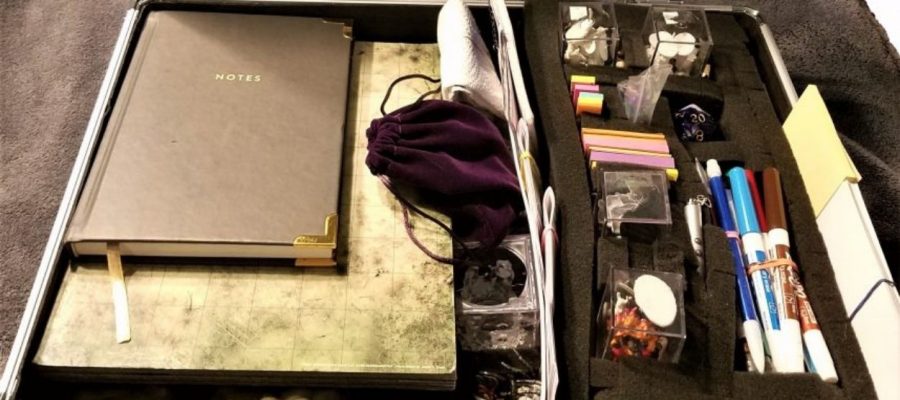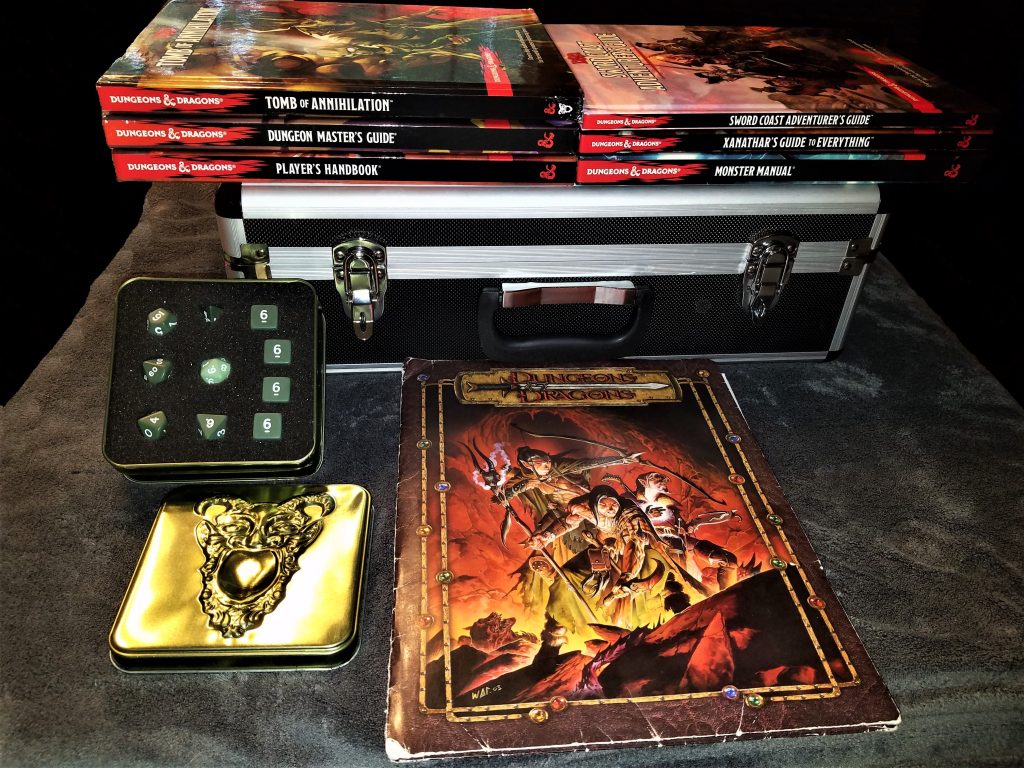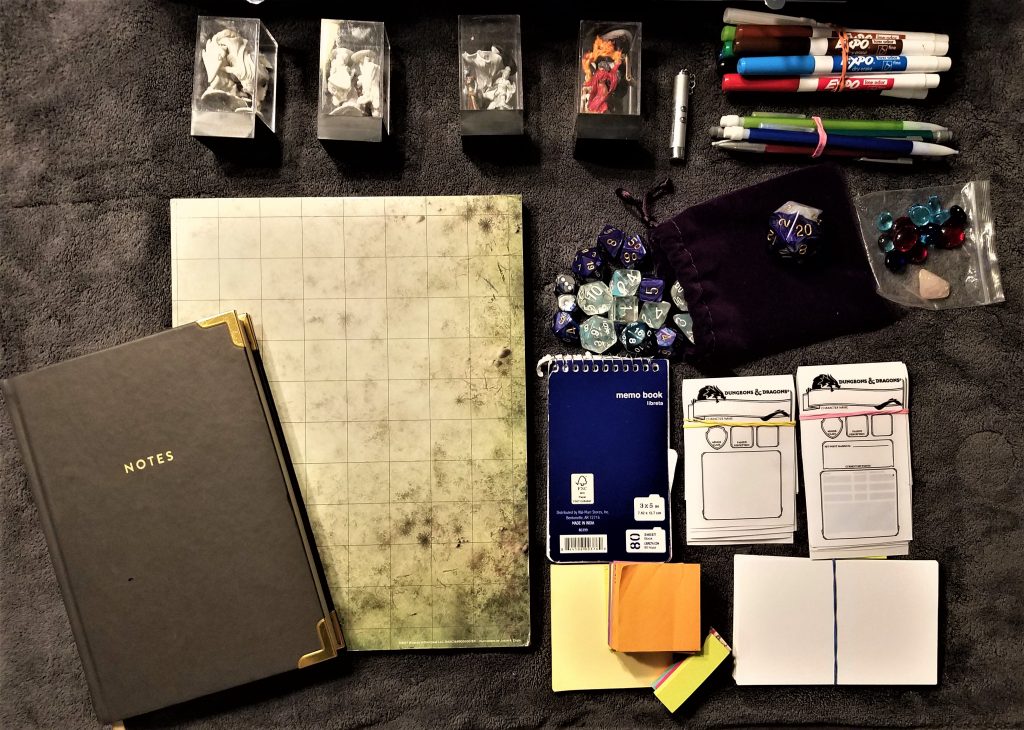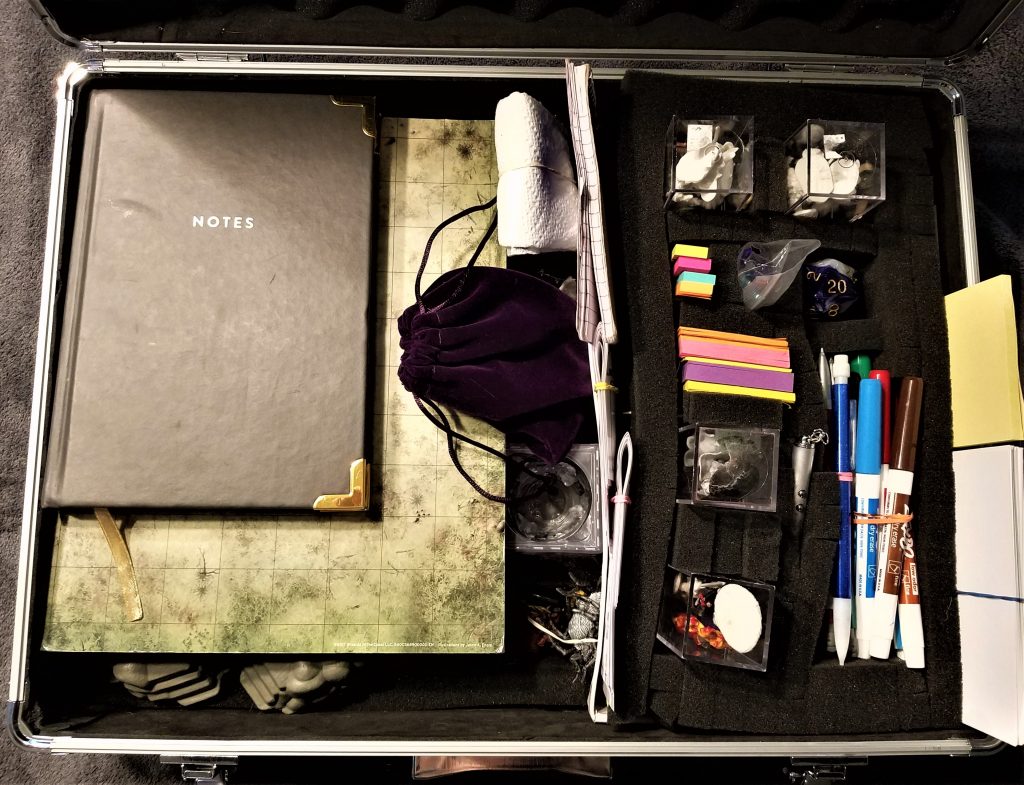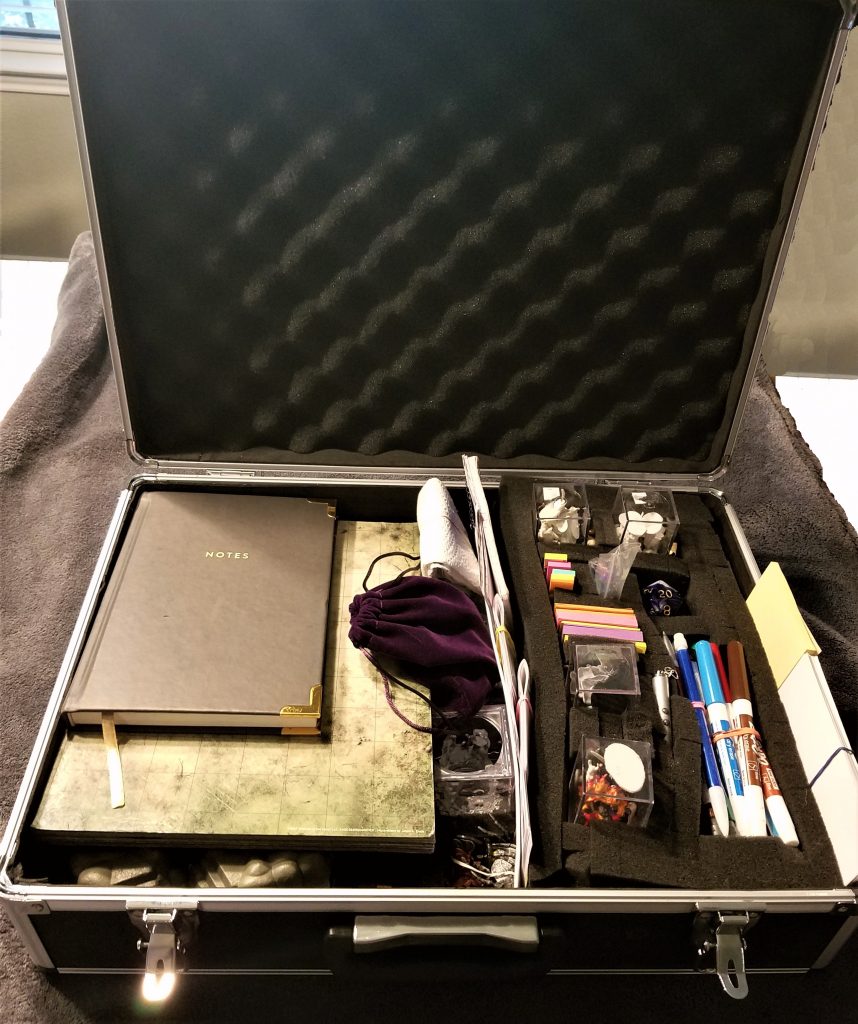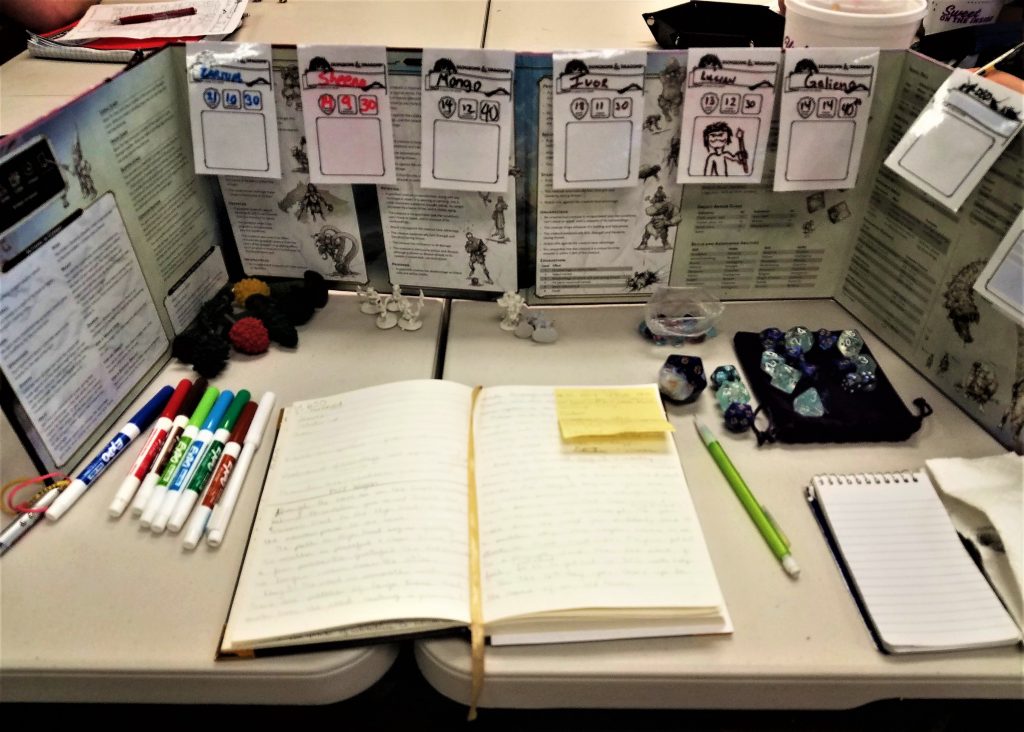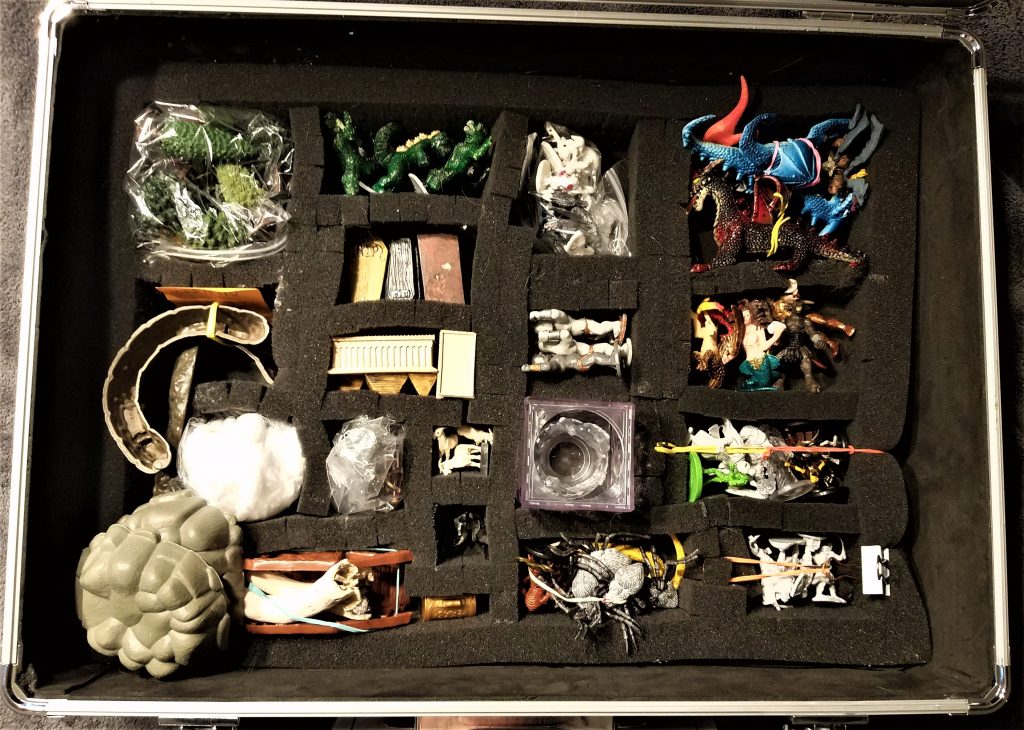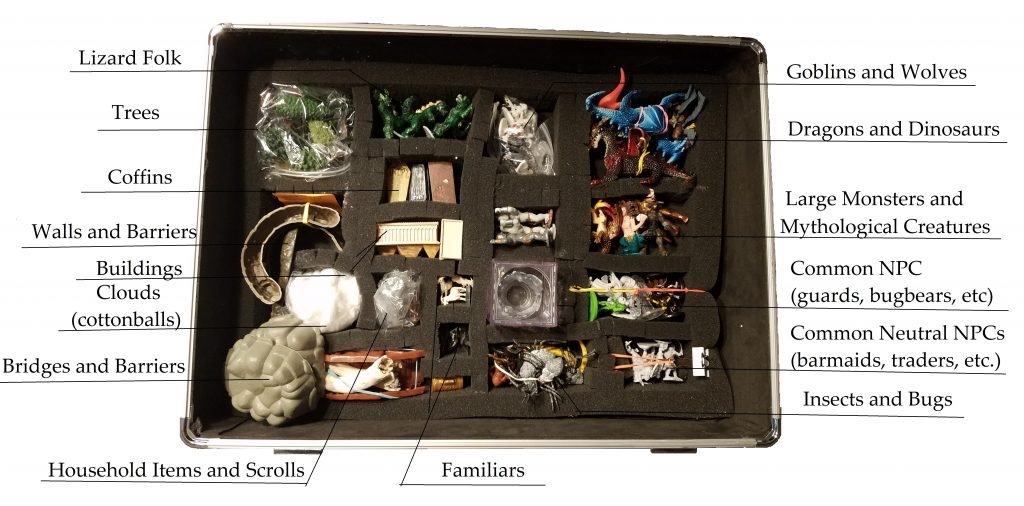Every Dungeon Master has their own style. They develop their approach over time, adapting to match their players needs and their own creativity. While some DMs use nothing more than theater of the mind, others have entire set-ups they bring to every game.
If you’re anything like us, you like to invest yourself completely into projects. When we started, we dove straight in and had a few hiccups along the way. Although we’ve been playing for around a year now, the kit I built for my own DM style continues to change. Here’s a guide to help you get started:
1. Choose Your Carrying Case
When it comes to starting your kit, deciding which type of case is often the first and most difficult task. The case depends entirely on the things that you would like to include and how adaptable you need your kit to be. Start with the number of books you plan to carry, then your miniatures, then everything else (pens, notebooks, maps, etc.) I decided to use a foam-filled hardback cases for the essentials; I use a simple backpack for carrying my books (can also be found at Harbor Freights).
2. How to Carry Your Miniatures
Miniatures can be annoying to keeping up, especially small items and delicate paint jobs. Dungeon Masters need to access their miniatures quickly, keeping them organized and protected. Some DMs prefer to use organizer trays. My kit has an adjustable foam block lining that allows me to tuck most of miniatures and wilderness items in the bottom. The most valuable, vulnerable miniatures I actually store in the plastic cases that come with each set of Chessex dice. I have a minor dice addiction so there are plenty of boxes and each fit 2-5 minis. I also keep a handful of mancala beads around to represent the monsters or NPCs that I don’t have. Other options include Tabletop Tokens and Pathfinder Pawns, perfect replacements for plastic minis.
3. Make Room for the Essentials
Like the original texts has always said: the only things you need to play include pen, paper, dice, and imagination. No matter what style of DMing you choose, those really are the only things every Dungeon Master must have. Everything else you add is an accessory for convenience, entertainment, organization, or preference.
4. Different Ways to Track Initiative and Characters
Dungeon Masters have tons of things to keep up with. Not only do they have to maintain the story and encourage roleplay, they also have to keep track of every player. Managing non-player character (NPC) hit points, armor class, spells slots, and traits takes a lot of concentration but there are a few things that can help. I like to use a combination of post-its and homemade laminate cards but others use index cards, mini notebook pages, or by simply keeping notes. Anything that sticks to your Dungeon Master screen or folds over the edge.
5. Lots of Dice
I’m not the first D&D player to tell you that I have a dice problem but, honestly, it’s not always a problem. As a Dungeon Master, I like to keep several sets of dice plus my extra large d20. The large d20 is easy to find when all my DM stuff is spread out, plus it just feels cooler and more decisive. One set of dice is perfectly fine for any DM, extra sets help with combat and multiple monsters (as well as bad luck).
6. Maps and Creating Environments
Deciding which type of map to use depends on numerous factors, including the size of your kits and the size of your play space. Each style of map has their own advantages and disadvantages. Roll-up maps come in different sizes, usually 3-5 ft wide; pre-drawing maps is a little easier but the edges must be weighted down. Fold-up maps, also called Adventure grids, are compact and easy to store in a backpack but markers rub off easier and they can be awkward to unfold.
7. Character Sheets and Pre-generated Characters
Dungeon Masters not only run adventures; they’re commonly seen as guides for new players. Players look to DMs for direction as they invent characters and learn their skills. If you play games at boardgame or comic shops, new or wandering adventurers will definitely seek you out. Whether they need a table to play or help working on a character, it’s best to always be prepared. You can find character sheets and pre-generated characters of all levels at the DM Guild.
When I began to make this Dungeon Master kit, I thought I was ensuring I had everything I needed. Quickly I learned that a Dungeon Master is there for their players, not themselves. The majority of the items in my kit are honestly for my players. I keep miniatures of all classes to make sure everyone has a good representative for their character. I keep extra pencils, paper, and character sheets for anyone that needs it. I strive to keep my kit up-to-date, adding fun items for a good surprise. As a Game Master, my kit is designed to build the world for my players. Right now is fitted for a typical forest but everything will become tropical as we move into Port Nyanzaru to tackle The Tomb of Annihilation!
Did you make your own Dungeon Master kit? Tell us all about it in the comments below or share your ideas on social media down below.
